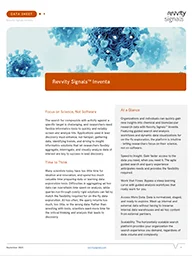Looking for Ways to Accelerate Candidate Selection During Drug Discovery?
Scientists in the drug discovery field will tell you it takes a lot of time to develop a drug – recently pegged at 10+ years, according to a BIO, Informa and QLS Advisors report on clinical development success rates.
Ask any business director or C-suite executive in the space and they’ll confirm that the investments behind those drug candidates are shocking – as much as $2.5 billion, according to some estimates! This is a key driver for only sending those drug candidates most likely to succeed into clinical trials.
To provide perspective, the FDA has currently approved 15 novel drugs as of May 2022. Based on recent estimates, those are the lucky ±7% of drug candidates that have made it through clinical trials.
Some back-of-the-envelope calculations suggest that for those 15 approvals, approximately 176 other candidates failed somewhere between Phase 1 and submission. And while 176 may not be an impressive number, the cumulative 16 billion invested dollars for those 176 candidates to fail certainly is.
There is real value in making sure the best candidates are progressed to clinical trials. In fact, multiple top-20 pharma companies have spent valuable discovery time in meta-analysis, reviewing their past portfolios, deciphering where they went wrong and determining how they could improve a candidate’s chance at success. Here’s an example of how Pfizer achieved an industry leading end-to-end clinical success rate of 21% - a notable comeback tale.
In retrospect, the key to success wasn’t too shocking. It came down to making better decisions.
Simple, right?
Understanding the Intersection
While there are different thoughts about how to achieve the goal of making better decisions, there are some common themes, notably, understanding the intersection of target binding, bioavailability, and pharmacological activity.
Intersection refers to ensuring your drug of interest is at the right place (correct target, correct tissue, adequate bioavailability) at the right time (along an ADME profile) and in the right amount to produce the desired effect.
The key is in the intersection of these elements, since alone none of these ‘right’ elements is sufficient to predict trial success.
The task of informatics software is to help you – the scientist – make better decisions, faster.
The latest release of Signals Inventa 3.1 introduces the Target Engagement Profile (TEP) app. This is the first product to incorporate in vitro efficacy experiments, in vivo pharmacokinetic studies, and bioavailability into a single percent inhibition vs. time visualization.
This means you get a holistic view of the ‘right’ data in a matter of minutes.
The Inventa Approach to Data
Building off a powerful data management and indexing layer, Inventa standardizes and unifies experimental data. Supporting both in vitro and in vivo data from multiple sources (including Signals VitroVivo data), it is all harmonized into a single system. A shared language and understanding between diverse assays is leveraged when the data is unified into a single, powerful, decision-making graph.
In vitro efficacy data identifies the amount of drug needed to elicit the desired effect. In vivo PK data characterizes the concentration of a drug within the blood or tissue of a model organism. Combined with plasma binding data giving insight into how much of the drug is free to bind to its target protein, these three different assays reveal whether a certain drug will produce a therapeutically meaningful effect.
The TEP app is easily extended to compare target engagement across any number of compounds, at any dosing regimen, with any formulation, in any species, in any therapeutic area with only a few clicks.
The key takeaway? Users say the TEP app does in minutes what had previously required months of development.
Revvity Signals continues to lead the industry with innovative and holistic approaches to data analytics. To learn more about Signals Inventa and see how the Target Engagement Profile app can enhance your discovery pipeline, click here.

Samantha Jeschonek, Ph.D.
Samantha Jeschonek is the product manager for Signals Inventa, Lead Discovery Premium, and Lead Discovery. She holds a Ph.D. in Molecular Biology, Cell Biology, and Biochemistry. She has spent the last several years as a product manager for drug discovery informatics software. In addition to more than a decade of bench experience in molecular biology, she brings a passion for FAIR data / metadata to the Revvity Signals product team.

